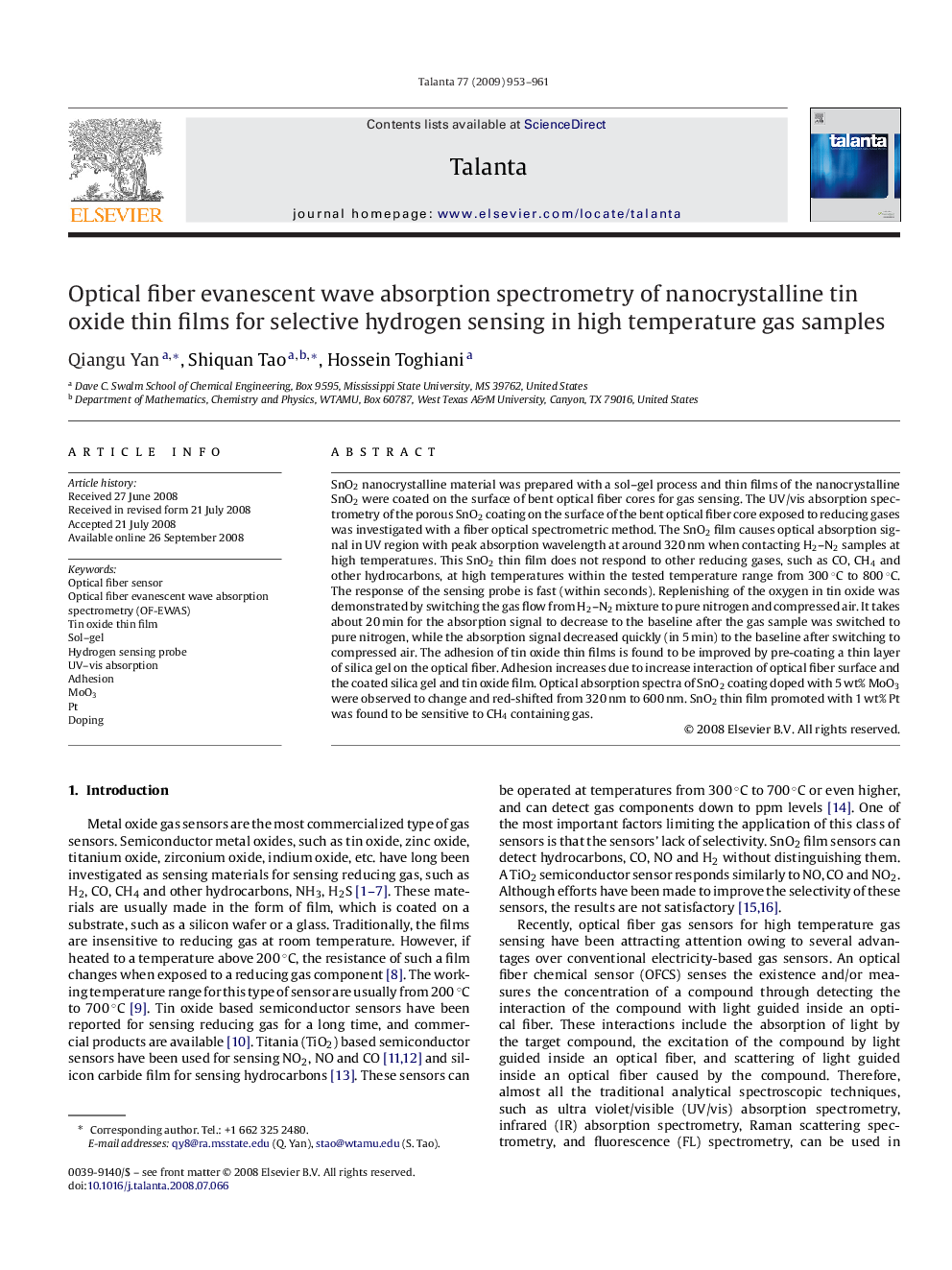| Article ID | Journal | Published Year | Pages | File Type |
|---|---|---|---|---|
| 1247021 | Talanta | 2009 | 9 Pages |
SnO2 nanocrystalline material was prepared with a sol–gel process and thin films of the nanocrystalline SnO2 were coated on the surface of bent optical fiber cores for gas sensing. The UV/vis absorption spectrometry of the porous SnO2 coating on the surface of the bent optical fiber core exposed to reducing gases was investigated with a fiber optical spectrometric method. The SnO2 film causes optical absorption signal in UV region with peak absorption wavelength at around 320 nm when contacting H2–N2 samples at high temperatures. This SnO2 thin film does not respond to other reducing gases, such as CO, CH4 and other hydrocarbons, at high temperatures within the tested temperature range from 300 °C to 800 °C. The response of the sensing probe is fast (within seconds). Replenishing of the oxygen in tin oxide was demonstrated by switching the gas flow from H2–N2 mixture to pure nitrogen and compressed air. It takes about 20 min for the absorption signal to decrease to the baseline after the gas sample was switched to pure nitrogen, while the absorption signal decreased quickly (in 5 min) to the baseline after switching to compressed air. The adhesion of tin oxide thin films is found to be improved by pre-coating a thin layer of silica gel on the optical fiber. Adhesion increases due to increase interaction of optical fiber surface and the coated silica gel and tin oxide film. Optical absorption spectra of SnO2 coating doped with 5 wt% MoO3 were observed to change and red-shifted from 320 nm to 600 nm. SnO2 thin film promoted with 1 wt% Pt was found to be sensitive to CH4 containing gas.
